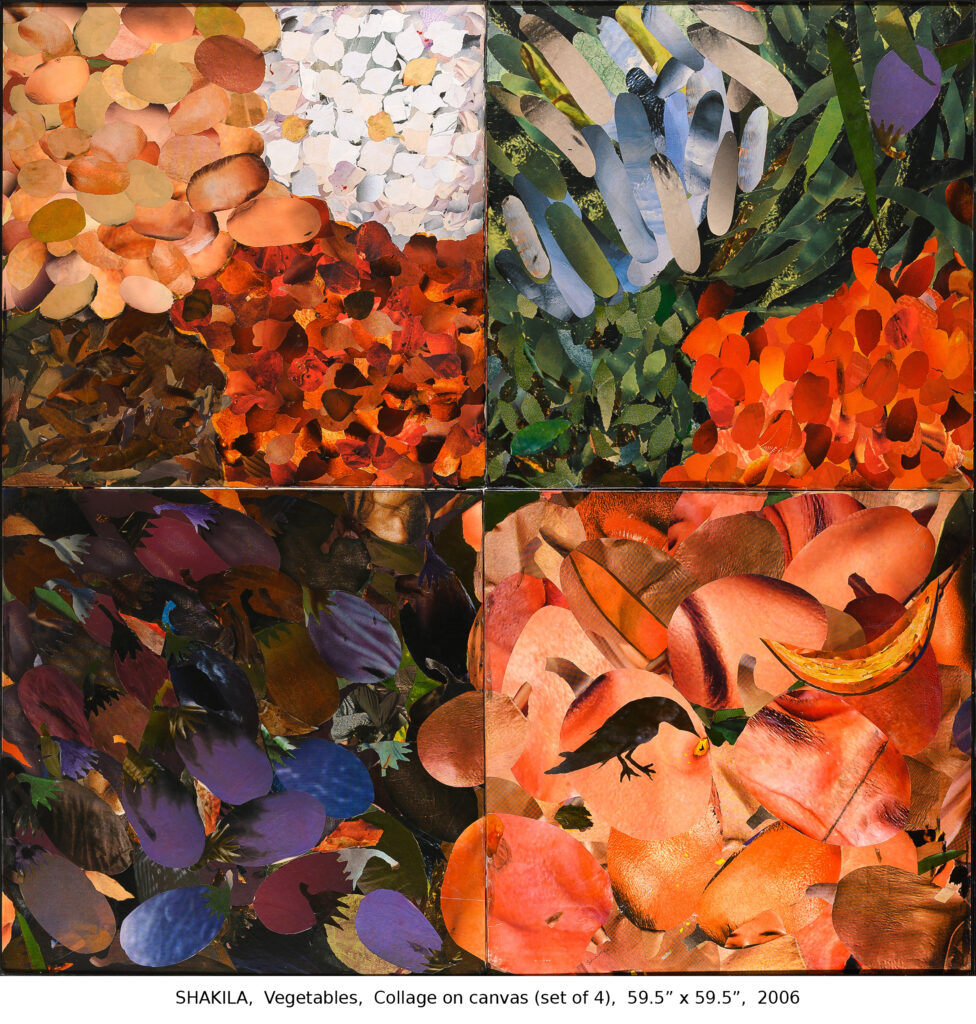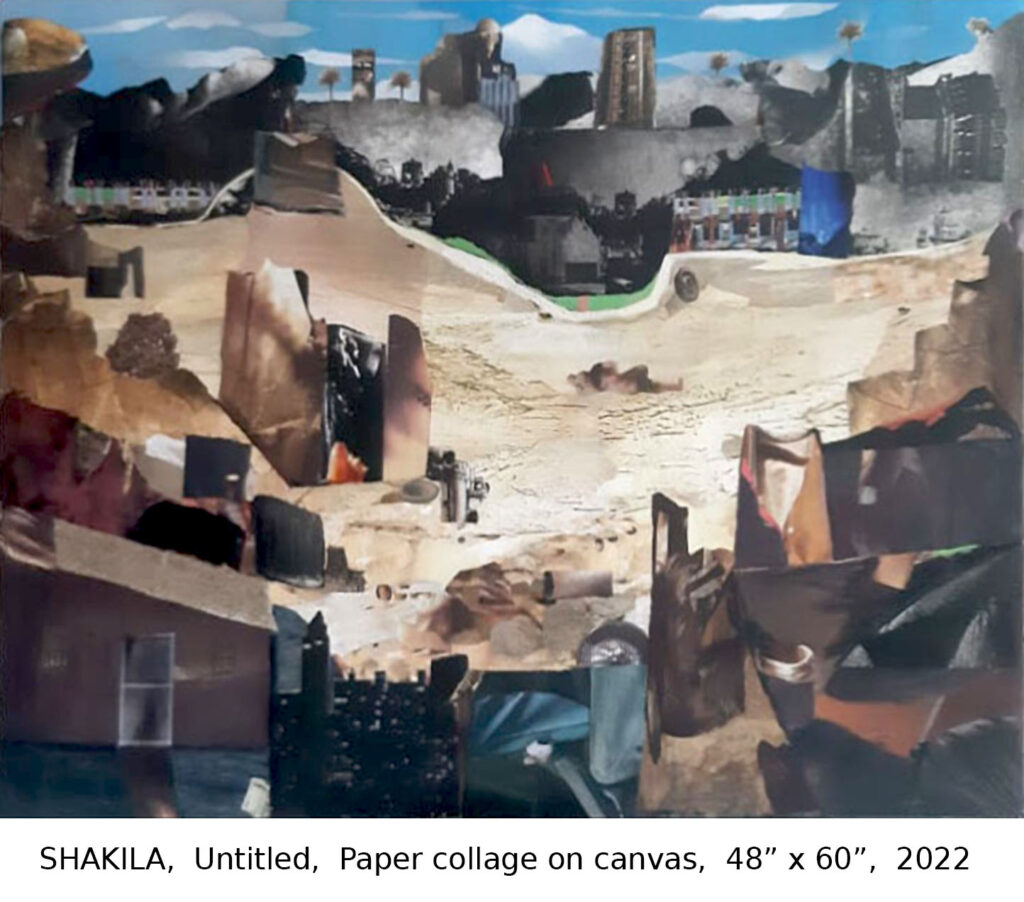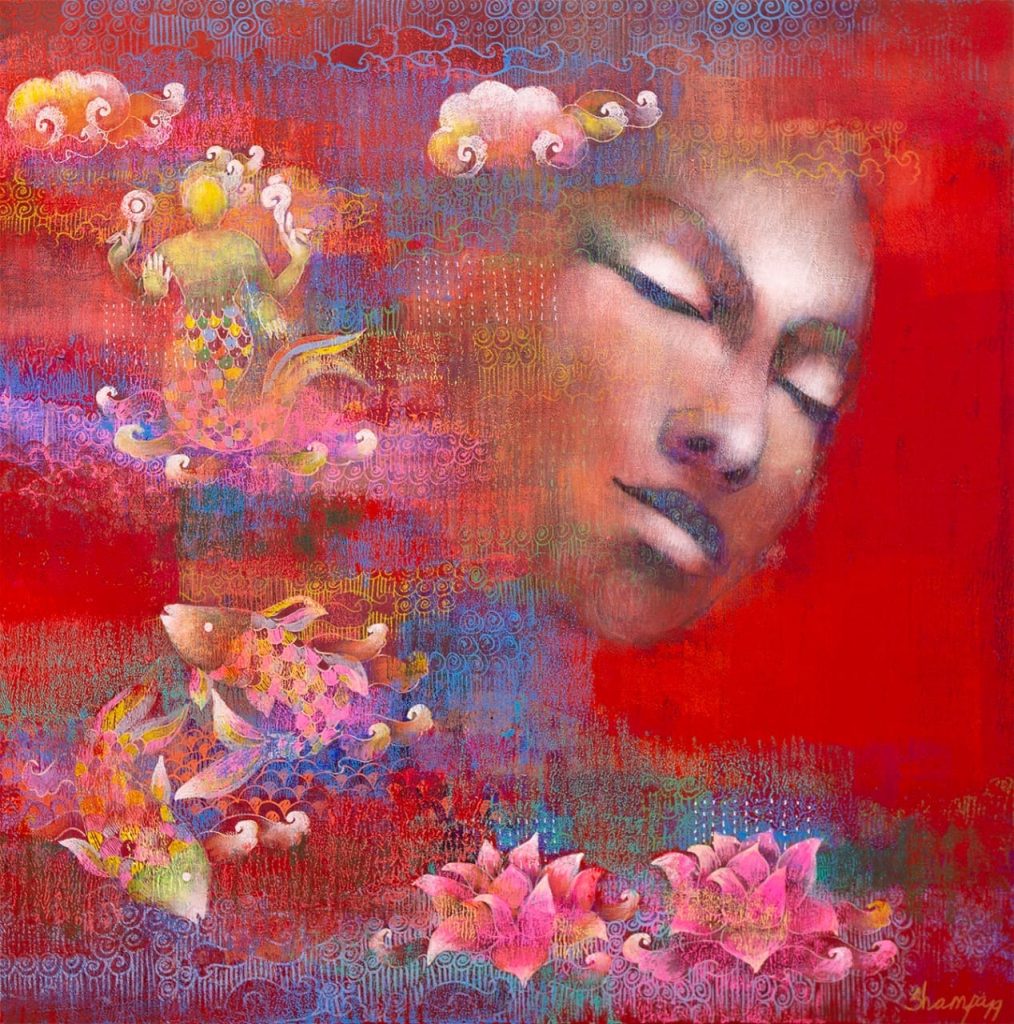The inspirational story of artist Shakila making a mark in contemporary art is known to many but her large body of work has never been showcased outside Kolkata. For the first time, the Centre of International Modern Art in collaboration with Bihar Museum, Patna is showcasing over 30 of her artworks. The show entitled ‘SHAKILA artworks from 1993 – 2024’ is open to audiences between April 13 and May 5.
Shakila started her life on the pavements of Kolkata. Deserted by her husband, Shakila’s mother Jaheran Bibi sold vegetables in the city markets. Jaheran soon met B.R. Panesar, who in his spare hours, helped the children who lived on the pavement alongside the YMCA. He did the same with Shakila and her siblings.

With Panesar’s help, Shakila found a job as a paper bag supplier. Her first brush with paper started here as she turned paper into bags. Eventually driven by a deep desire to create, she started creating paper collages, as she had watched Panesar paint and do collages with paper. There was no looking back for her after that. He managed to procure some coloured paper from magazines and a few pieces of hardboard. In a matter of days, Shakila created 3 or 4 collages on the theme of vegetables. Panesar, being a practising artist and a member of the contemporary artists’ society, at once saw the virtues and splendour of what Shakila had created and showed it to his contemporaries like Bikash Bhattacharjee.
Rakhi Sarkar, the director of CIMA gallery recalls, “When CIMA started in 1993, Panesar approached me to help represent Shakila. CIMA organised her first show in collaboration with the World Bank; our friend, Bim Bissell, was the force behind it all, as she was working there at the time. Given Shakila’s special case, the World Bank permitted us to sell her works. Out of the 30 works Shakila presented, 29 were sold instantly. Bank interest rates were a whopping 13-14% in those days, and Shakila soon started earning regular interest.”

Soon she exhibited at the Chitrakoot Art Gallery in Kolkata in 1991. I recall the catalogue that was published on the occasion. The works had a touch of the naive, and were immensely contemporary and original – a style that became Shakila’s leitmotif. The hand-torn edges provided the magic texture. She blended the abstract and figurative effortlessly, lending her works a layered and nuanced edge – almost bordering tribal ‘dream paintings.’
Shakila was commissioned in 2000 by the Hannover Fair authorities, Germany, to create the stall for the Grameen Bank with a hundred giant installation pieces. The proposal was first conceptualised by Rajeev Sethi, the reputed curator from Delhi. Shakila’s small mud house was completely inadequate for large-format works. A special pandal in the form of a covered hall was created, and Shakila toiled endlessly to fulfil the commission. The artist who has recycled paper to such brilliant effect. Two dimensions fused with three-dimensional forms creating a visual spectacle.

Sarkar adds, “The story of Shakila is a deeply inspirational chronicle of an emerging woman of our subcontinent – from extreme poverty and suffering, she rose to a creative resurgence and ultimate triumph. I feel humbled and immensely proud of her. She has repeatedly restored our hope and faith in the power and magic of the visual medium and its ability to uplift, inspire and sustain creative excellence and human dignity. Shakila does not pontificate or judge. Her art is all about light and shadow, at the confluence of reality and the invisible.”
Over the years, she has won several awards, accolades and honours. She emerged as a beacon of light for all underprivileged women. She rose above religion, caste and creed, and restored hope and creative freedom in an acrimonious age fraught with social constraints and violence against women. Shakila started with a charming naïveté and humour, but the hypocrisies and vagaries of life imbued her works with an occasional darkness. She internalised her experiences and finally sublimated them into immensely poignant expressions – resplendent with subtle humour and sensitivity, hitting out silently yet forcefully, whenever her conscience and creative instincts beckoned. Her works are genuine reflections of her life and times
Image Courtesy – CIMA
Unfolding Dreams Since 2016: Tracing the Journey of Abir India’s First Take





